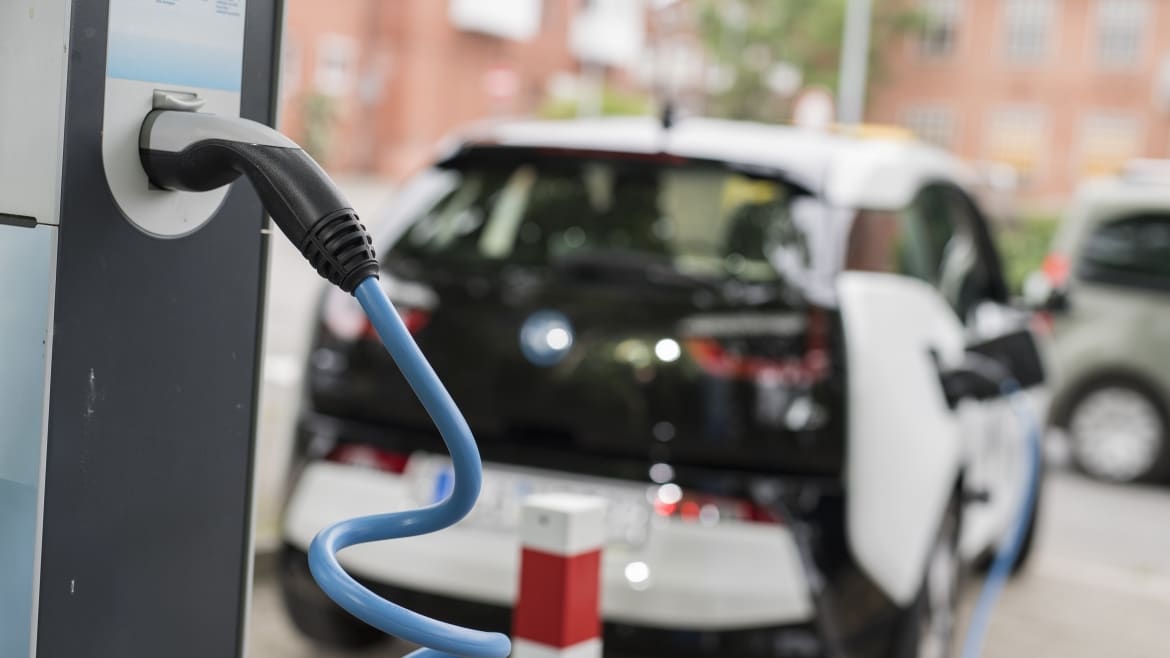Over the last few years, there has been a surge of support for more electric vehicles and improved EV infrastructure in British Columbia.
Because EV technology has been improving at such an impressive rate, they are becoming strong contenders for everyday drivers. To support the inevitable influx of EVs, municipalities, stratas, and individuals have begun installing the proper infrastructure into their building(s).
This includes EV chargers in parking stalls and parkades. Because electric vehicles and the components that go along with them are still relatively new, most buildings were not built with EV chargers in mind. For buildings that are looking to accommodate EVs, each one needs to be assessed to install an EV charger by a professional electrician.
Get an EV charger assessment
Like any worthwhile investment, deciding to install an EV charger is an important decision that can take time to figure out all the moving pieces, especially for stratas.
The strata has to discuss the details of installing an EV charger and create a plan of attack. Homeowners living in a strata can kickstart this process by making a formal request to their strata for an EV charger to be installed. Regardless, the first step is getting an EV charger assessment from a qualified electrician.
An assessment provides in-depth details so that stratas and property managers can make an informed decision from the location of the charging station to the type of charger necessary to meet demand.
In the assessment, it will determine the distance between the suggested charger location(s) and the electrical source it would be pulling from. Depending on the situation, some parking stalls may need to be moved — this could be homeowner stalls or visitor parking. Knowing the most optimal orientation of the EV charger will direct strata and property managers to who they will need to contact and discuss a rearrangement of parking stalls. Some research into municipal and strata bylaws to determine the legal designation of parking stalls is necessary.
Another factor to consider is, can the building’s current electrical infrastructure handle an EV charger? The trained electrician performing the EV charging assessment will inform the property manager and strata of all mandatory electrical upgrades, if necessary, before moving forward with the installation of an EV charger.
Choose an EV charger
After drafting a plan that follows the EV charging assessment, it’s time to choose what EV charger to install. Luckily, all EVs come with a portable cordset charger so it’s a simple matter of meeting the demand that the charger will face.
Level 1 EV charger
At 120 V (15-20 amps), these EV chargers are suited for plug-in hybrid vehicles, those with shorter commutes, and individuals with private parking stalls. With this charger, most vehicles take anywhere from 5 to 20 hours to fully charge a depleted battery and only one EV can be charging at a time.
Level 2 EV charger
For a more dynamic option, the level 2 EV charger ranges from 208-240 V (20-100 amps) and can be a great option for both individuals and multiple users. Charging is much faster than the level 1 chargers at 2 to 8 hours depending on the vehicle and type of level 2 charger — hardwired, portable, non-networked, networked, dual-port, and power-sharing or load-sharing chargers.
Hardwired chargers are connected to the building and need to be installed by a certified electrical contractor, whereas portable chargers don’t require installation and can plug directly into certain outlets (same as dryers and stoves).
A major benefit of level 2 chargers is that they can be connected to a network to include features including payment and collections systems, control access, and energy consumption monitoring. Non-networked chargers are typically for individual-use in a private and secure stall. Both require a Wi-Fi or cellular connection to provide the aforementioned services, and these will have a monthly networking fee associated with them.
The power-sharing or load-sharing chargers are connected to each other and spread out power when more than one charging station is being used at the same time. Dual-port can have two EVs charging at the same time on one charger.
Cost of installation and usage
For a level 1 EV charger, installation costs depend on the orientation of the charger in the building and can vary from $300 to $2,500. If a dedicated circuit or a new outlet needs to be installed, the electrical room from the parking stall is far away, or an upgrade to the building’s electrical infrastructure is necessary, then installation costs will increase.
Similarly to the level 1 EV chargers, installation costs depend on the building and any rearrangement or upgrades you need to complete for level 2 EV chargers. For individual charging stations, installations can cost anywhere from $400 to $4,000, and for multiple user stations, they can cost anywhere from $2,200 to $16,000 depending on the building, how many stations are installed, and what type they are.
These can be installed both indoors and outdoors. Because outdoor chargers have anti-vandalism and weather-resistant precautions in place, they typically cost more than their indoor counterparts.
For a small EV that drives 13,000 km per year, it could cost them anywhere from $300 to $350 each year to cover their electricity usage. For a detailed calculation breakdown of how much money you spend on gas or electric, check out the cost calculator from the Canadian Automobile Association (CAA) and see how much you could be saving.
You can compare various makes and models of gas, hybrid, and electric vehicles based on how much you drive each year. Compare a current gas vehicle to an EV and see how much you could save if you switched.
How to track and bill electrical usage
There are 5 different ways you can implement tracking and billing for your EV chargers. For stratas, seek legal advice to determine if the option you would like to use falls under your strata rules, bylaws, and the Strata Property Act. It may be necessary to call an Annual or Special General Meeting to pitch the EV charger project and determine any new rules before you can begin. For templates on structuring strata bylaws for EV charging click here.
Tracking and billing options you can setup include:
-
Fixed user-fee
With this option, homeowners can pay a flat rate for their energy usage to cover the extra cost that is charged to the main building account. This option is the most common because of how easy it is for the strata to add a fee to the homeowners’ monthly strata bills. Depending on the strata, there may be rule and bylaw changes necessary before you can implement this option.
-
Networked charger
Adding a networked charger will allow you to track actual usage per user. This can be a very effective method if the charger is being used by multiple EV owners or is in a public space. With additional features available and the convenience of a network, these are typically more expensive and have a monthly networking fee (around $150 to 300 per year per charge port).
-
Utility-based EV charging account
By setting up a new account and electricity meter for the building, you can specifically track and bill all EV charging by itself. If there are more than one EV owner using the charger, it’s up to the strata council to determine how to split up the electricity costs. EV meters are similar to regular electrical meters and installation costs can range from $3,000 to $20,000 depending on the building complex.
-
Install a sub-meter
Instead of installing a separate meter, you can use a sub-meter. These can track electricity used for charging without being attached to the regular building account. Some simple sub-meters can estimate electricity use to help determine user fees, but aren’t perfectly accurate — installation of these can range from $50 to $500. Approved revenue meters, another type of sub-meter, has greater accuracy and installs can cost anywhere from $300 to $3,000.
-
Direct link to the homeowner’s electrical account
While a direct link in a shared parkade can be extremely difficult to install, this option can work quite well for townhomes with attached garages on an individual basis. EV owners are billed directly through their existing electrical bill.
Which EV charger should you install?
With EVs on the rise, a charging station that can handle multiple users will become ideal for stratas — making level 2 EV chargers the most versatile and dynamic option. Evaluate the installation cost, current and future demand, which EV charger suits the building and your strata council best, and finally add your strata to the EV charging registry. If you’re unsure what charger would suit your building best, contact a professional electrician for an assessment.
There are apps and networking services that help monitor energy consumption, collect payments, and provide access control. In other words, those using the charging station pay for the energy they use, and property managers can monitor and control the charger as they see fit.
To help with the initial installation cost, BC Hydro, FortisBC, CEV for BC, and Plug In BC all offer significant EV charging station rebates. This opens the door for more stratas and property managers to improve the electrical infrastructure of their building(s) to prepare for an increase in EVs.
For more information on how British Columbia is working towards improved EV infrastructure and an increased amount of EVs, stay up-to-date with Plug In BC. Also, for a strata and property manager EV charging checklist to help them stay on track, click here, or here for a homeowner and tenant checklist.
At Red Ryno Energy, our professional electricians perform EV charger assessments and installations for all types of EV chargers for property managers, stratas, and individuals. For more information or any inquiries in the Lower Mainland and Fraser Valley, contact us today.




